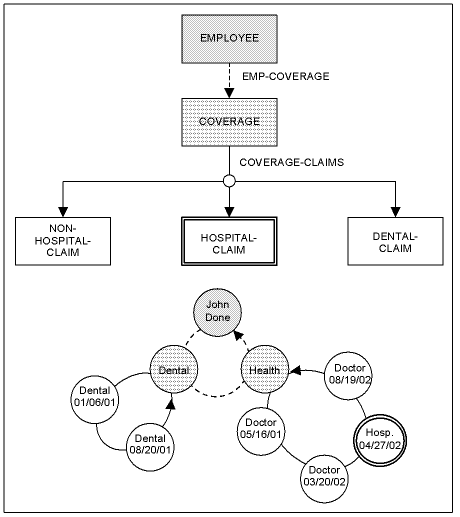

If a record type is the owner in multiple relationships, it is possible to represent those relationships using a single set in which there is one owning record type but more than one member record type. Such a set is called a multimember set.
Multimember sets reduce the number of links and therefore the storage needed to represent multiple relationships. They are often used when a set occurrence will typically have members of only one type or when the member records are often processed together. For example, Commonweather keeps track of three types of insurance claims: dental claims, hospital claims, and others such as doctor and life. Since different information is recorded for each type of claim, each has its own record type: DENTAL-CLAIM, HOSPITAL-CLAIM, NON-HOSPITAL-CLAIM. The relationship between an employee's insurance coverage (the COVERAGE record type) and the three types of claims could be represented by three sets. However, Commonweather has chosen to represent them using one set, COVERAGE-CLAIMS, because a given coverage is usually associated with only one type of claim (for example, only dental claims are associated with coverage under a dental plan). The exception to this is coverage under a health insurance plan against which claims can be made for both hospital and non-hospital services. By ordering the set LAST, claims made under a given coverage will appear in the order in which they are made. The following diagram illustrates this example, showing John Done's coverage in two insurance plans and the claims that he has made against those plans.

|
Copyright © 2013 CA.
All rights reserved.
|
|